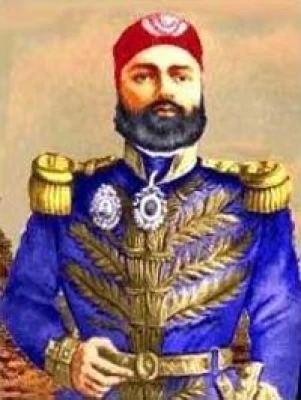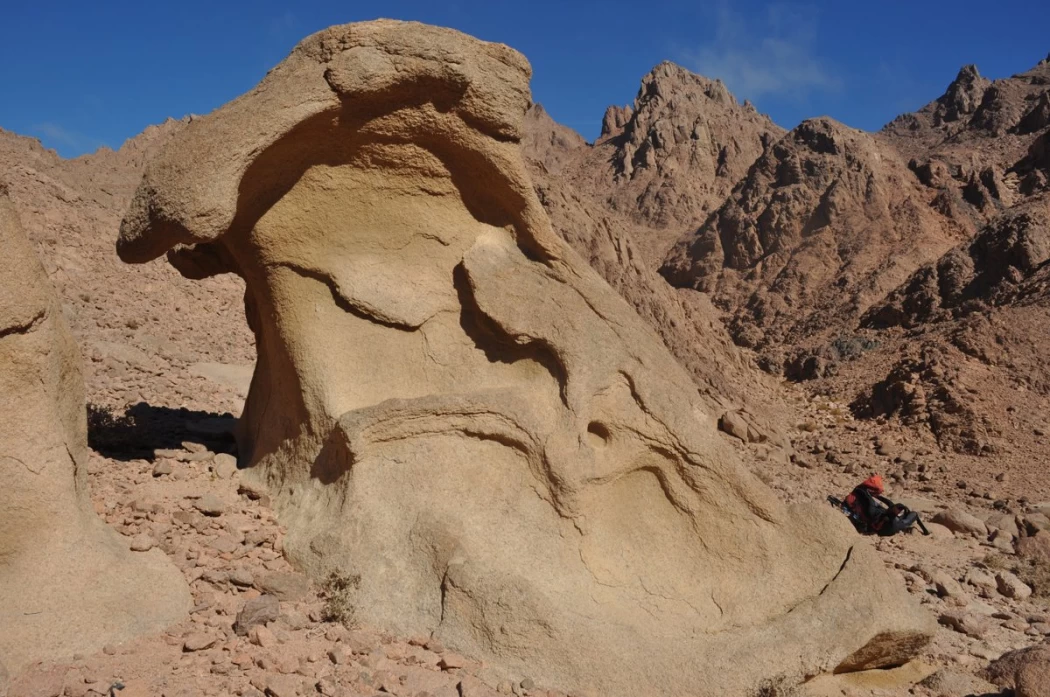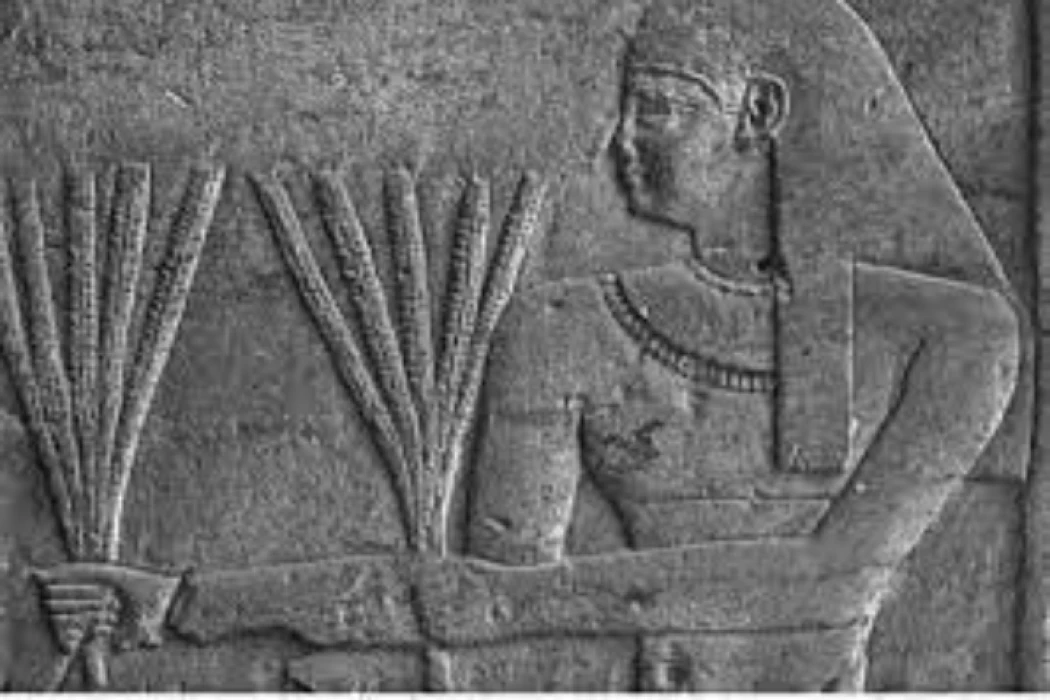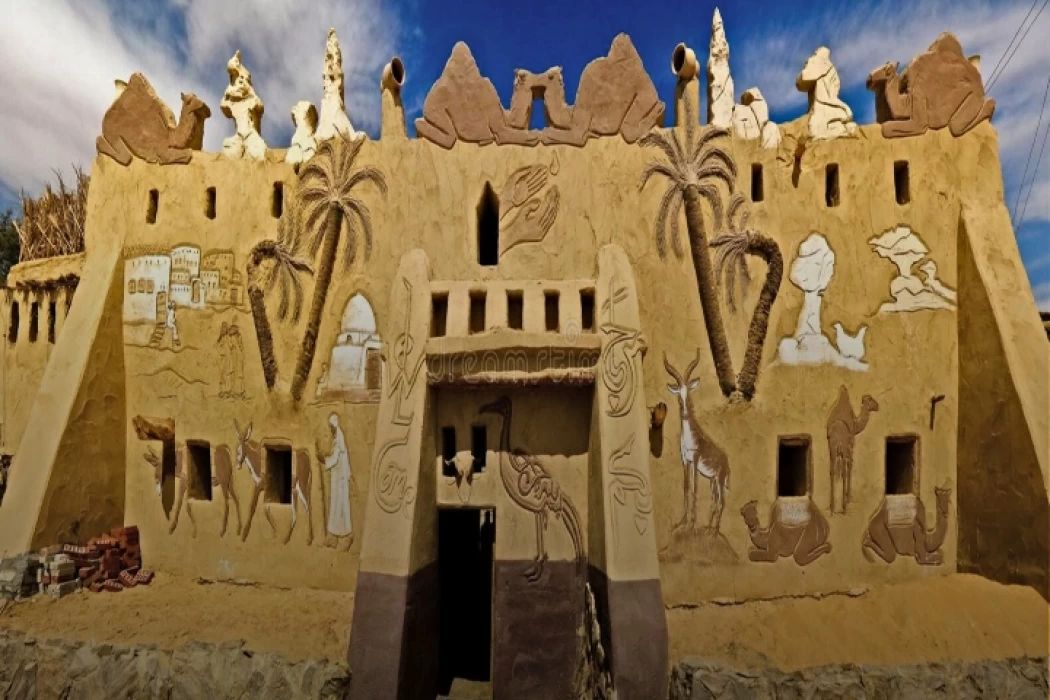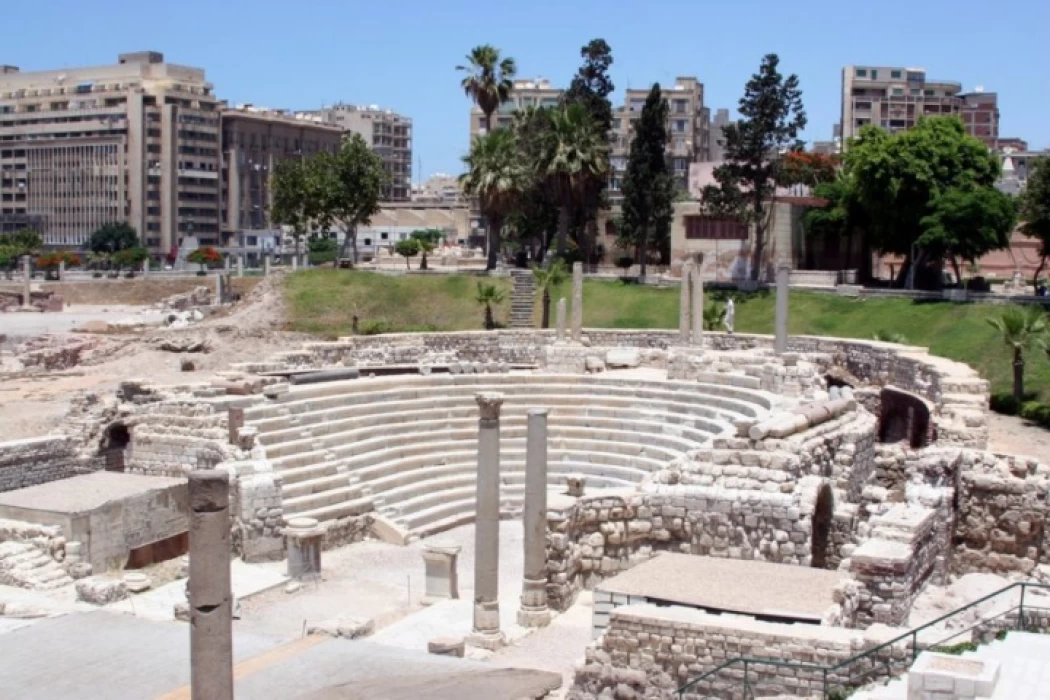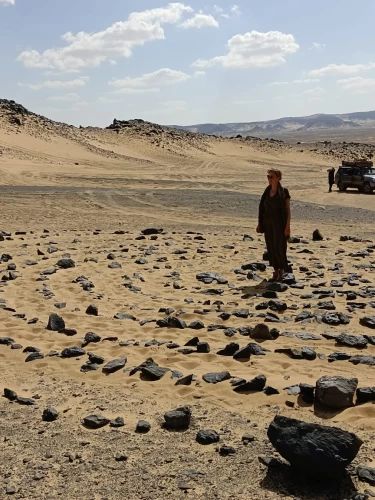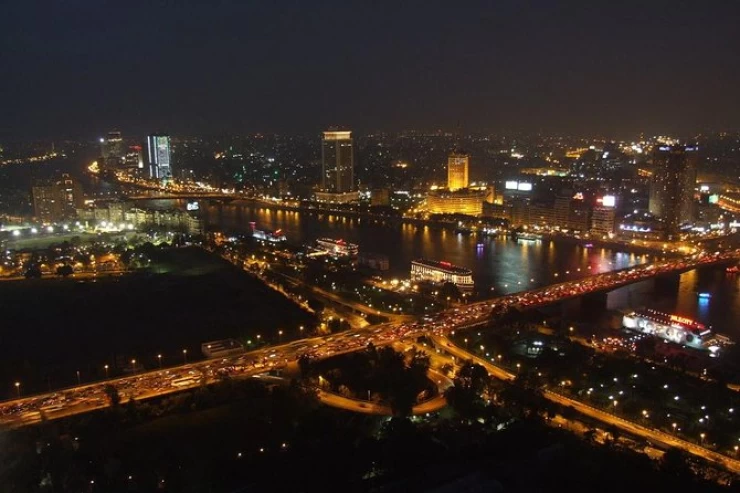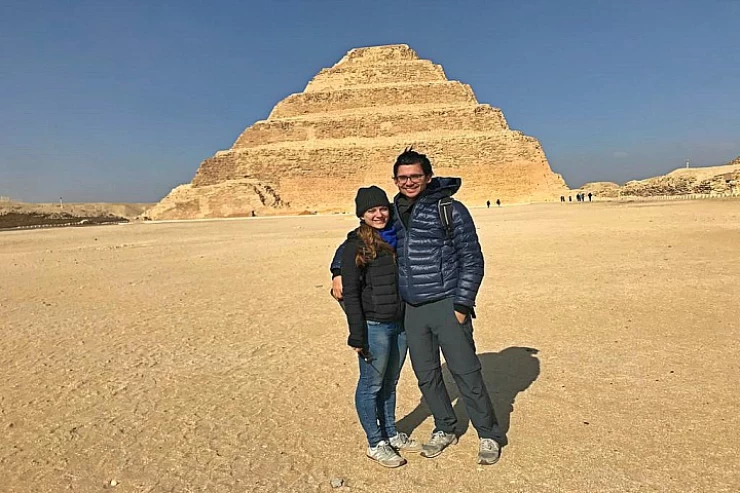
Bab Zuweila , Cairo
Bab zuweila or El-Metwally Gate is one of the gates of "Old Cairo" in the Egyptian capital Cairo. This door or gate is famous for being the gate under which the heads of the messengers of hulaku, the leader of the Tatars, were hung when they came threatening Egypt, which eventually led to the defeat of the Mongols and the emergence of the Mamluk state, and the last Mamluk sultan, Tuman Bey, was also executed on it after the Ottoman Sultan Selim I entered Egypt and annexed the Ottoman state, marking the end of the Mamluk state.
The door was created in the year 485 Ah (1092 ad) and consists of a huge building block with a depth of 25 meters, a width of 25.72 meters, and a height of 24 meters from street level.
The door consists of two round towers that protrude a third of the building block outside the wall, and in the middle of the two towers is an open corridor leading to the entrance door, and the two towers rise to two-thirds of the height in a solid building, and in the upper third of each of them comes a defense chamber covered by a longitudinal vault intersecting with a transverse vault.
Reason for naming
The name "zuweila" is because it is the door that leads convoys heading west towards the city of Zuweila deep in the Libyan desert, and also there is a fortified door with the same name "Bab Zuweila" in the city of Mahdia in Tunisia, where the city of zuweila was in the old days on the road of caravan cities and one of the Centers of trade with Africa. Bab Zuweila is the third door that still resists the factors of time and neglect after the other two doors of Old Cairo: Bab al-Nasr and Bab al-Futuh, this door is considered the most beautiful of the three doors, and it has two arched towers at the base, which are more like the two towers of Bab al-Futuh, but they are more rounded, Bab zuweila occupies a square area, the length of each of its ribs (25 meters) and the corridor of Bab zuweila is all roofed with a dome, and most of the decorative elements have disappeared from it.. When the Muayyad King Abu Al-Nasr Sheikh built his mosque in 818 ah, the architect of the mosque chose the two towers of Bab Zuweila and erected the minarets of the mosque on them.. The famous historian (Al-qalqashandi) mentions a lot about Bab Zuweila, and he mentions in his book (Subah Al-ash) verses from poetry written by Ali ibn Muhammad al-Nili talking about the greatness of this door, including saying:
Man, if you see zuweila's door
you would have known as much about our structure
If Faroon had seen him, he would not have replied
Stated and not recommended by Hamana
In general, Bab zuweila is called the gate of the Matwally. Where he was sitting at his entrance (Metwally) collecting the entrance tax to Cairo!
Latest Articles
Admin
Regin of Abbas I of Egypt | Abbas Pasha I
Abbas has been often described as a mere voluptuary, but Nubar Pasha spoke of him as a true gentleman of the "old school". He was seen as reactionary, morose and taciturn, and spent nearly all his time in his palace. He undid, as far as lay in his power, the works of his grandfather, both good and bad.
Admin
Story of Gabal Shayeb Al Banat - Red Sea Mountain
Jabal shayb al-banat is one of the Red Sea Mountains in the eastern desert in Egypt, located to the west of the city of Hurghada at a latitude of 27 degrees north and a longitude of 33.5 degrees east of the Greenwich line approximately, this mountain is the highest mountain peak in the eastern desert with a height of up to 2185 meters, it is a prominent mass of igneous rocks
Admin
Neper God Of Grain
Neper was the deity of grains, particularly cereals that were important in Ancient Egypt, such as wheat and barley. It was stated that he foretold when the crops would grow, be harvested, and disappear.
Admin
Badr Museum in Farafra
The Badr Museum is located in a mud building, which is the common home found in this medieval part of Egypt. All of the artwork that was created by the artist is quite unique. His work almost always depicts life in the Farafra Oasis and he provides the work through both painting and sculpting.
Admin
Djoser
Djoser was an ancient Egyptian pharaoh of the 3rd Dynasty during the Old Kingdom and was the founder of that epoch. He is also known by his Hellenized names Tosorthros (from Manetho) and Sesorthos (from Eusebius). He was the son of King Khasekhemwy and Queen Nimaathap, but whether he was also the direct successor to their throne is unclear. Most Ramesside king lists identify a king named Nebka as preceding him, but there are difficulties in connecting that name with contemporary Horus names, so some Egyptologists question the received throne sequence. Djoser is known for his step pyramid, which is the earliest colossal stone building in ancient Egypt
Admin
Kom Al Dikka Alexandria
Kom El Deka, also known as Kom el-Dikka, is a neighborhood and archaeological site in Alexandria, Egypt. Early Kom El-Dikka was a well-off residential area, and later it was a major civic center in Alexandria, with a bath complex (thermae), auditoria (lecture halls), and a theatre.
